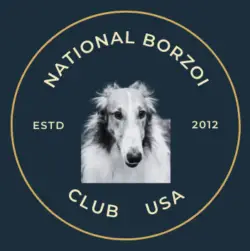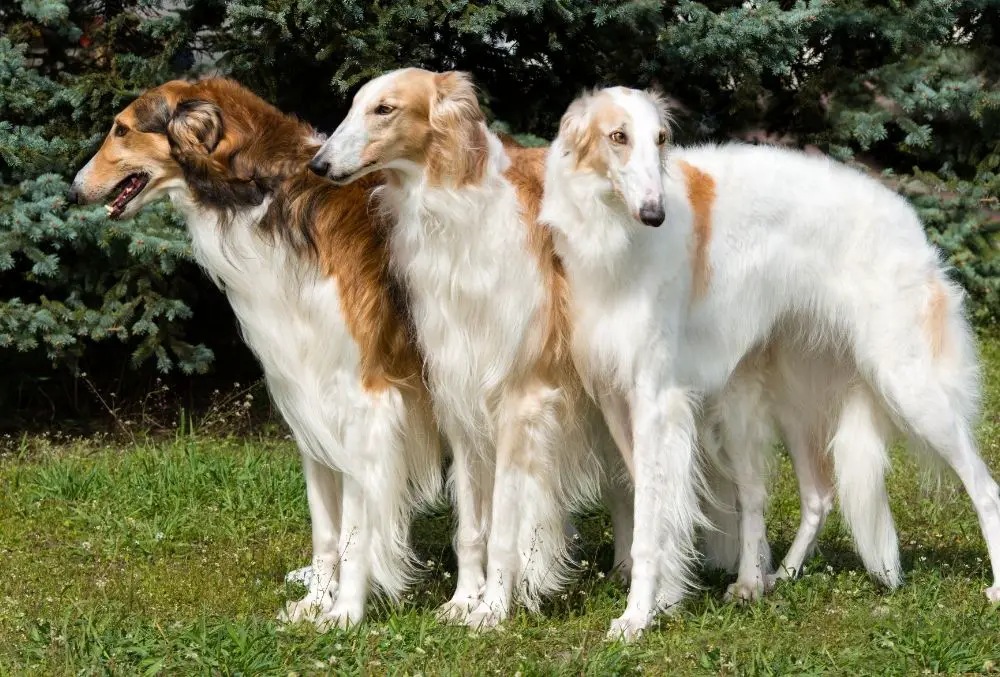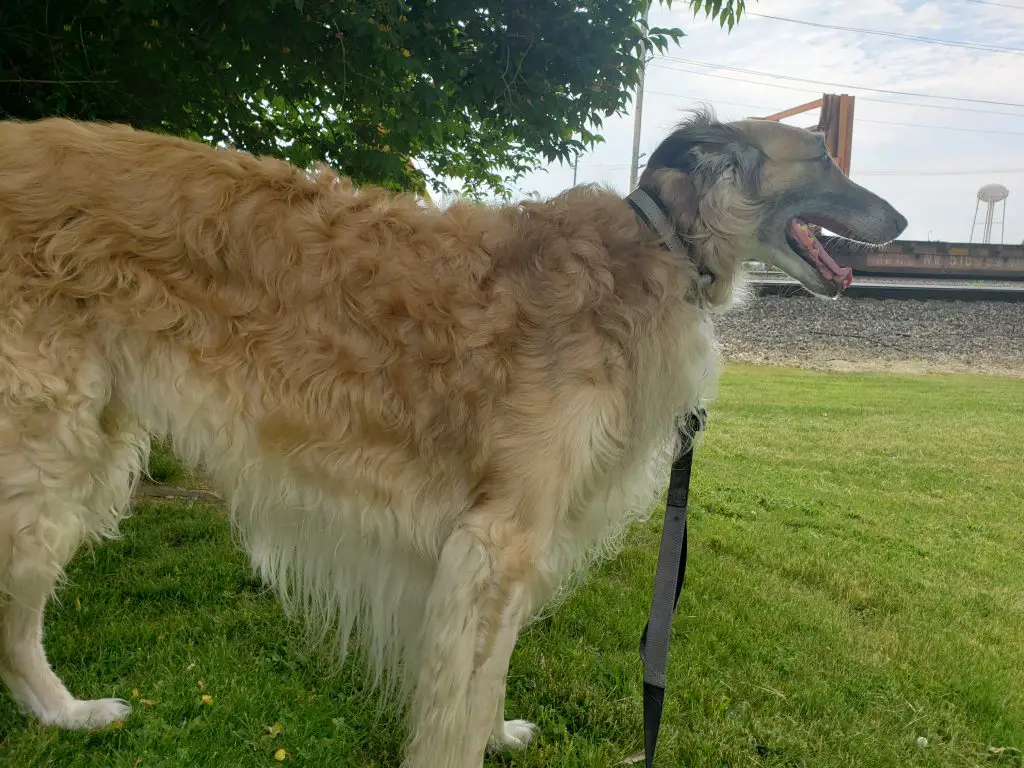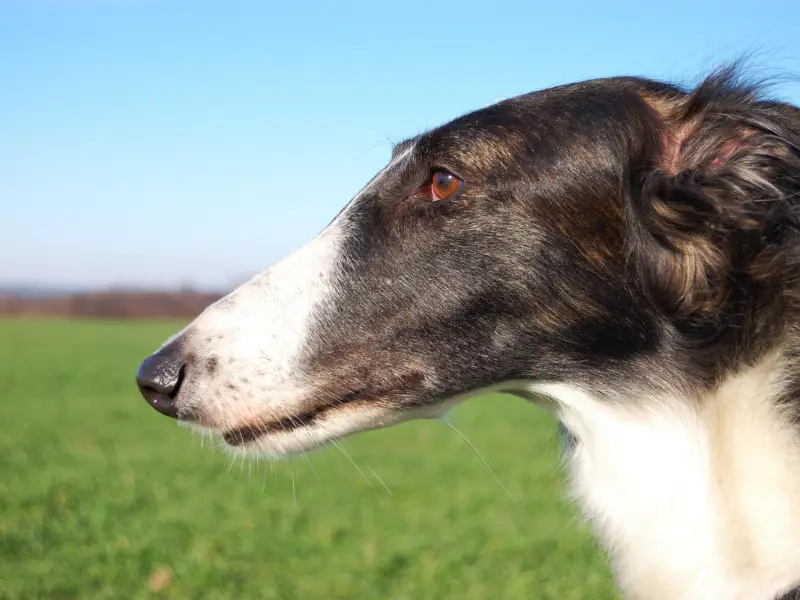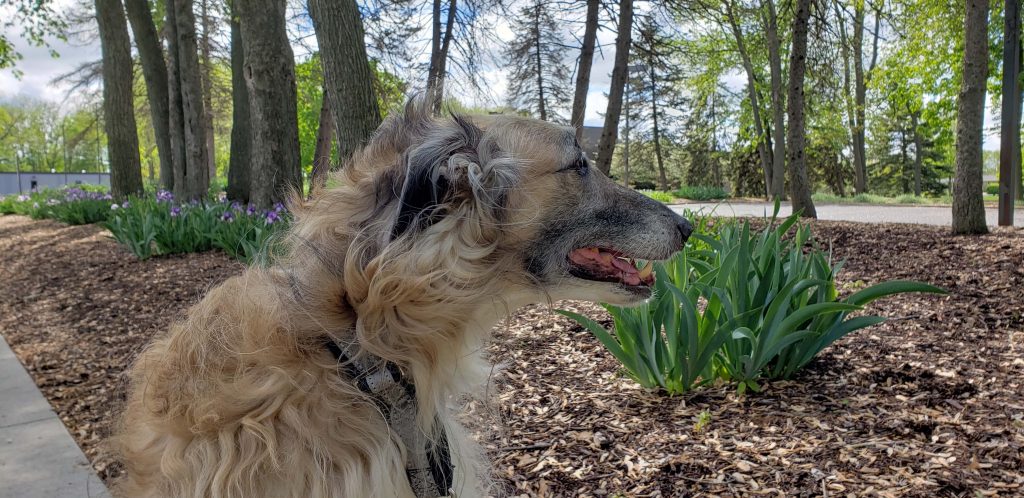So, you have fallen in love with the Borzoi breed, this ancient breed has been around for centuries, popular among the nobility and royalty in Russia. Even today, the Borzoi are a much-loved breed of dog which has captured our hearts over and over again.
In this article, we will be looking at the colors you can expect to see in this dog breed. From red sables to golden brindle hounds, we aim to explore the variety of colors and patterns your future Borzoi might have.
The Borzoi is a fairly rare breed, in spite of its famous origins in Russian nobility. They are large, lanky dogs that were initially bred for coursing large game and small game alike. This breed is not as common as it used to be, but they are truly amazing dogs and deserve all the attention they can get. Now, let us have a look at where the Borzoi originally came from.
Table of contents
Borzoi Origins
Before we look into the pretty colors, we must explore the rich history of the famous Russian Wolfhound.
In the time of Ivan the Terrible in the 15th century, the Borzoi breed was a favorite of the Russian nobles. So much so that there were literally thousands of kennels filled to the brim with them, but they were not mistreated in any way. In fact, the Borzoi were taken care of with great attentiveness. They were fed well, bred with care, and trained extremely well for hunting.
This breed was specifically bred to course for foxes, boars, hares, and even wolves which is where the famous name ‘Russian Wolfhound’ heralds from. Coursing basically means that these magnificent dogs were bred to chase down large and small game alike, usually for hunting purposes.
See Also: Horaya Borzaya
Coat Patterns, Markings, and Colors
Borzoi dogs come in a variety of different colors and have a lot of coat patterns and markings. Any of which can be combined to make your unique pup. Before we look at the basic colors for this breed, there are a few markings that you need to know about.
- Spots on white: You can have any colored spots on white, some examples of this are, red, black, brindled, or cream.
- White Markings: These kinds of markings are very common for the Borzoi, they can include socks, white rings around the neck or a white belly.
- Black Mask: This is exactly what it sounds like, a dark or black marking that goes over the eyes. You can get a black mask on almost any of the colors red, black, brindled, or cream.
These markings can overlap, so, you might have a dog with spots and a black mask or a dog with a white trim with spots. The combinations are endless.
Now that we know a few of the markings you can expect to see on a Borzoi, let’s take a look at some of the colors a Borzoi might have.
White
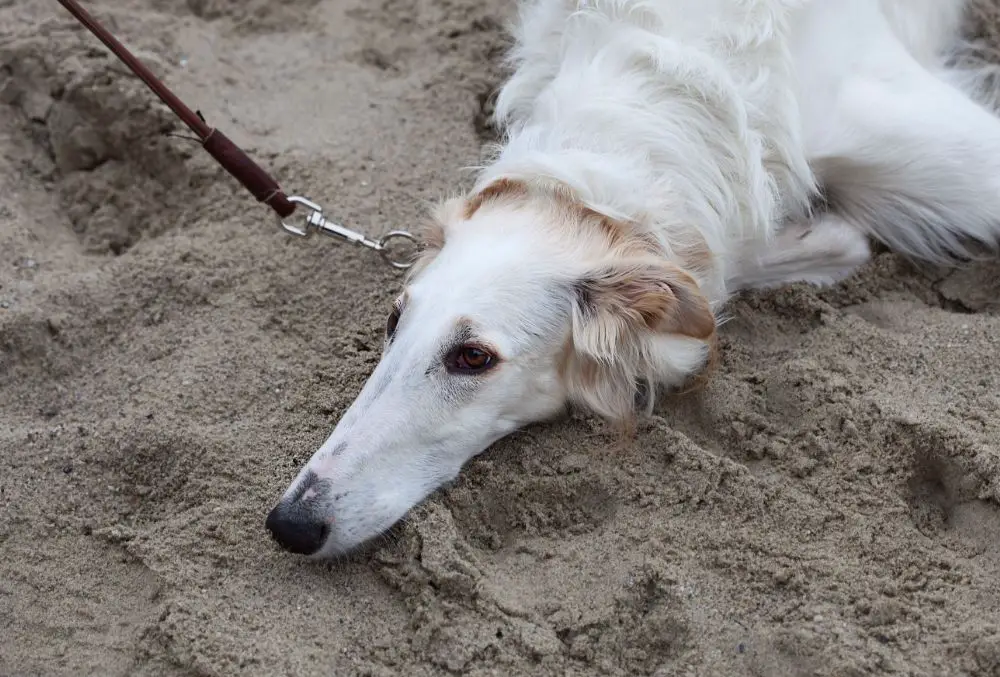
Pure white does not really exist in these dogs, what you really have is an extremely pale cream, gold, or even silver.
Cream
A cream Borzoi is usually born a silvery-gray color, which they lose as they grow older. In fact, by the time a puppy is 12 weeks old, they will have lost the gray coloring and become that beautiful cream color.
Gold
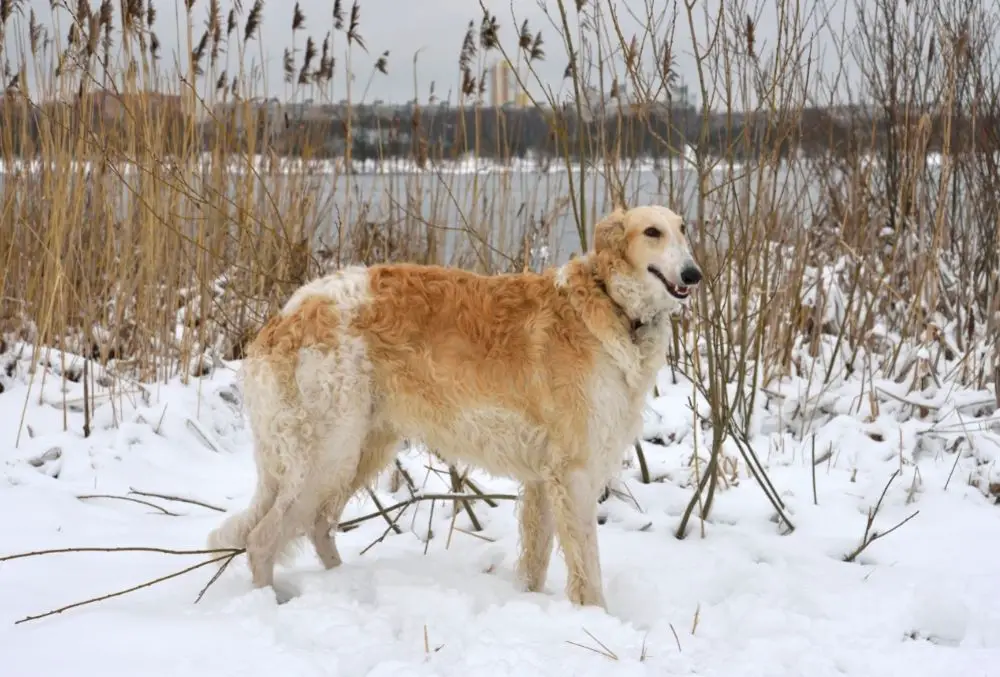
A golden Borzoi does not darken a great deal as they grow older, this is because there is typically a gene present that stops black hair from growing.
Apricot
This color is a variant of the gold Borzoi, but an apricot Borzoi tends to have more red intensifiers.
Red
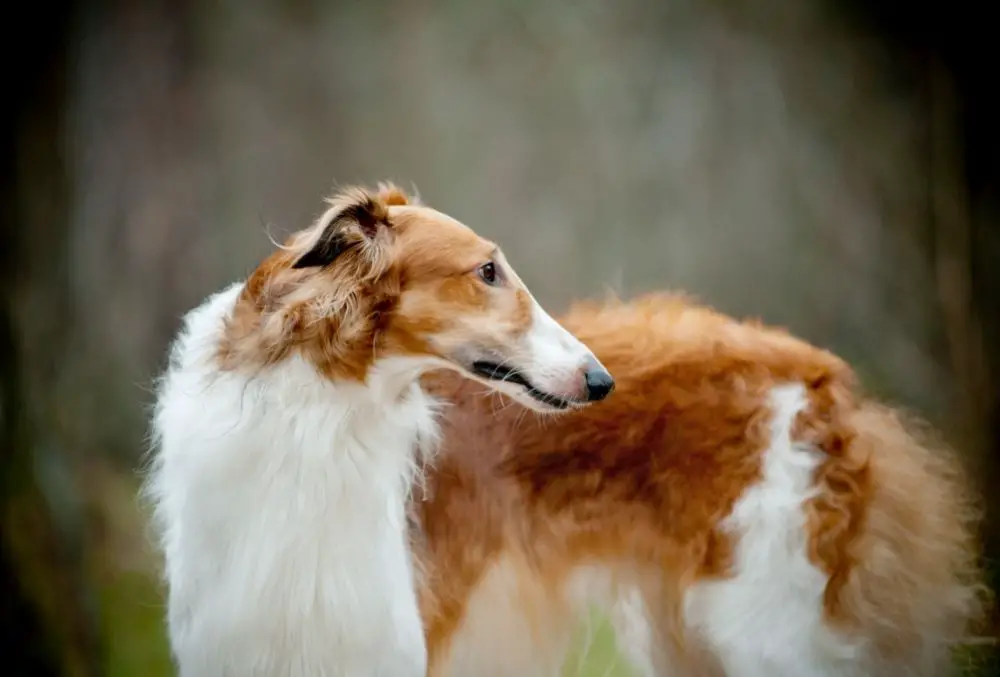
A red Borzoi will have no black hair at all, this is always the case unless there is a somatic mutation that can affect the skin on the nose, lips, and eyelid of the animal.
Mahogany Red
This color is extremely darkened, red, and sabled, they can appear dark when they are born but are clearly a more red shade as they grow older.
Black
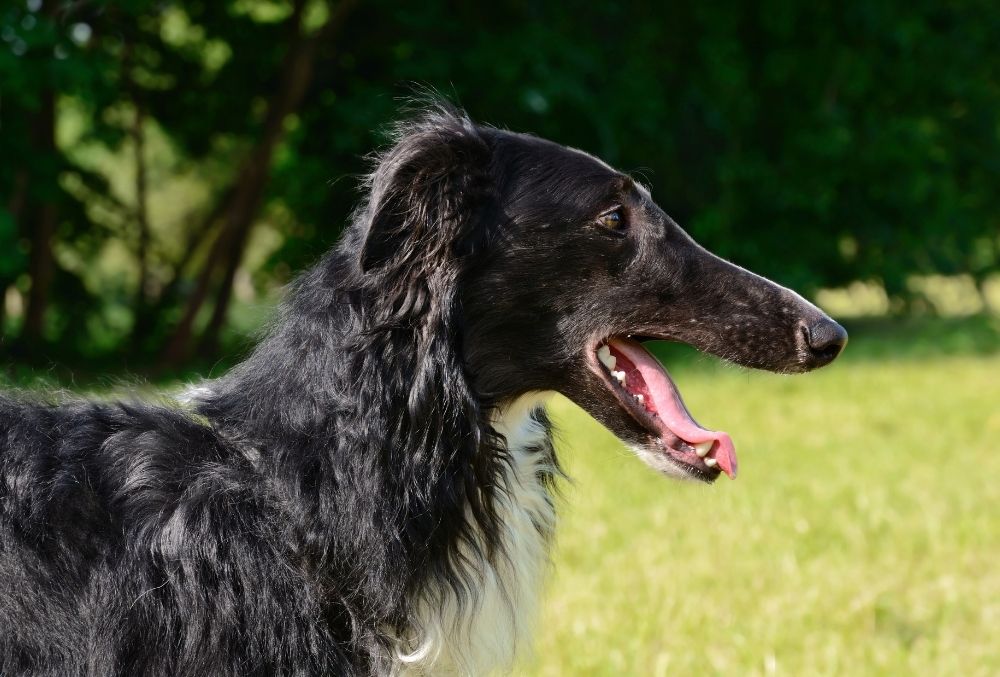
A black Borzoi will not have light-colored extremities, sometimes a black brindle dog may be hard to tell apart from a true black Borzoi, this is because there should be no color other than black and white on a Borzoi of this color.
Tan and Black

This color can be applied to a Borzoi that has lighter tan points. Often, they will have tan coloring on their legs, chest, and cheeks. A puppy that is tan and black may look darker when it is born, but the tan accents should be more noticeable after a few weeks at most.
Black and Cream
This is exactly what it sounds like, a dog that has both cream and black present in its markings. Sometimes a black and cream Borzoi can have such pale markings that it looks white, so it can be hard to tell exactly what color the dog might be.
Brindle
This color variant is basically a pattern of black stripes, this occurs whenever there is red present in the coat. You can get different colored brindled patterns such as silver, gold, or even red.
Black and Brindle
This is a term used to describe a brindled Borzoi that is black and tan while having the signature stripes that make up brindle coloring. Sometimes a black brindle can be so dark that it is hard to tell apart from a true black dog.
Silver Brindle

This is basically when a cream-colored dog has brindle markings. The silver happens when there is a mixture of both light and dark hair, giving the animal a silvery-colored coat. In this case, a silver coat with darker stripes.
Golden Brindle
This color is not a common color and is only possible through the selective use of gold to extension locus dogs that can’t have black in their coats.
Red Brindle
This is when a red dog has brindle markings, so, the striped patterns accented with the dominance of the red.
Mahogany Brindle
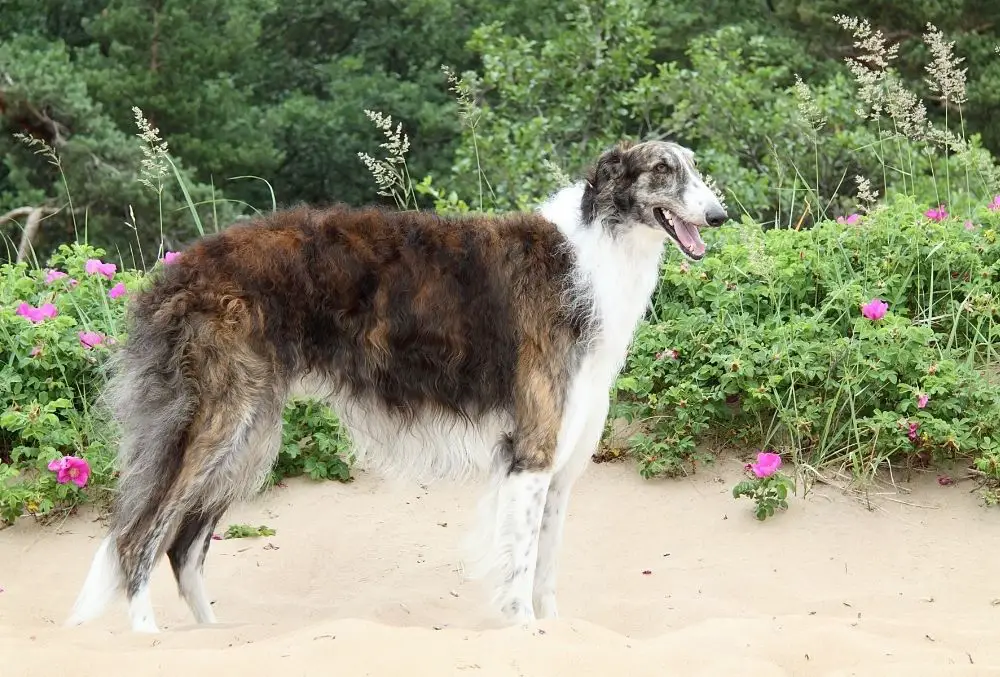
This color happens when a brindle dog is so dark and heavily striped that it is difficult to see the distinct brindle pattern on the animal.
Blue Brindle
This is a rare color where there are two of the DD dilution gene and the dog has the brindle pattern. A Borzoi with a blue brindle coat will have a mixture of dark stripes, and blue-colored fur, giving it that signature striped look.
Sable

A sable Borzoi will have light points that are larger and more predominant than the black. In this coloring, the upper body of the dog will be black, while the points are a pale color. This happens when the hairs are tipped with a darker pigment and pale at the base of the hair. A sable Borzoi never has a black mask, but they can be quite dark when they are born. By 4 weeks, they should start to show their more distinct markings.
Silver Sable
This coloring can occur when the red hair has faded into a pale cream color, leaving behind a silvery-colored coat instead of the white or cream.
Gold Sable
A Borzoi can be a gold sable if they have a golden under color that is intermediate between the creams and red present in the coat.
Brindled Sable
This color happens when the darker areas of the coat are not pure black and have the brindle striping that is typical of this coat pattern.
Red Sable
A red sable is when a dog has an overlay of black hair because of this these dogs can appear quite brown at birth and may lighten or get redder as they grow.
Fawn
A fawn-colored Borzoi usually has more intense redness than cream colors and has black-tipped hair dispersed in the coat. They do not have a heavily sabled overlay and can have black masks.
Brown
A brown or liver-colored Borzoi typically has liver brown pigment where there is normally black hair. This is quite a rare coloring for this breed of dog.
Silver
A silver Borzoi will have a mixture of gray and black hair on the face, and legs, while the body will have more dark hair tipped in light colors. The face of a silver Borzoi is often not pale-faced, and its front legs are darker than the feathering on the back of their legs.
Blue
This is a recessive gene that has blue dilution, which changes the black pigments to a maltese blue. This rare coat color can make the coat look blueish.
Blue and Cream
This coat pattern happens when a black and tan or black and cream dog has the recessive DD gene mutation, which changes the pigments to a lovely bluish-gray.
Final Thoughts
There are a great variety of colors that are typical for the Borzoi breed, and each one is beautiful in its own way. There is a lot to know about identifying each color: Whilst some look similar to each other, others are wildly different.
Hopefully, this article has helped you better understand what colors there are and how to identify them in your own Borzoi dog.
